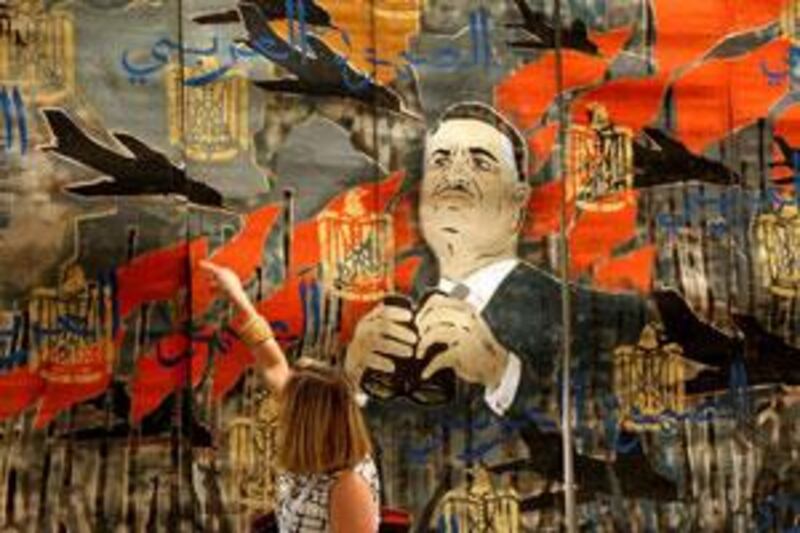Private art collectors will be the primary drivers of arts development in the GCC region, but only if governments leave them space to operate, says one of the UAE's most prominent art patrons. Omar Ghobash, the UAE Ambassador to Russia and one of the founders of the Third Line Gallery in Dubai, commended the GCC governments' ambition to turn the region into a cultural centre by building institutions such as the Louvre and Guggenheim in Abu Dhabi, but warned against an excess of "bureaucratisation".
"My strong belief is that it is the private sector and the private individual who will be and who should be the real drivers of what happens in the arts in the region," he said. "The presence of government initiatives can be threatening and overwhelming to the private [players]." Mr Ghobash has been heavily involved in both the private and the public sides of the UAE's cultural scene, with leadership roles in Abu Dhabi's Emirates Foundation and as a private investor involved in early negotiations to bring New York University to the UAE. In addition to co-founding Third Line Gallery, he founded Kaleem Books, a publishing house dedicated to Arabic fiction.
He said he believed the aggressive plans of the Abu Dhabi, Dubai and Qatari governments to build grand art museums and foundations were a result, in part, of a "lack of communication", in which the public sector felt it was stepping in where the private sector was falling short. But, he said, "we should guard against the 'bureaucratisation' of patronage". Rather than look disparagingly at one of the primary drivers of patronage - ego - the art scene should embrace it, he said.
"There are a few people who want to use patronage as a means to attract attention to themselves, then so be it, how wonderful," he said. "There's nothing morally wrong with a bit of ostentation, especially when we realise that artists can earn a living providing the means for others to express themselves." He also embraced speculation as a legitimate driver of art patronage, a view that put him at odds with much of the rest of the arts community gathered for the second day of Art Dubai fair.
"The purchase of works of art in hopes that they will rise in value is good," he said. Michael Danoff, the director of the corporate collection of the US investment firm Neuberger Berman, counselled against this view. "It's very risky to collect with investment as a primary goal," he said. "The collectors that I know, great, great collectors who have done the best to develop collections that happen to increase in value, they really happen out of love of art."
Although it is an investment company, Neuberger Berman collects museum-quality art not as investments, but as part of its "corporate culture", Mr Danoff said. The company's founder, Roy Neuberger, failed in his attempt to become an artist in the 1920s and founded the company in 1939 primarily as a way to make enough money to continue his relationship with art through collecting. Today, the company's collection, which was started in his honour in 1990, is a way of burnishing the company's brand, creating a platform for educational and other corporate social responsibility initiatives and improving the lives of the company's employees, who get to enjoy brushes with works by famous artists such as Gerhard Richter and Mariko Mori.
Mr Ghobash agreed that the most important function of patronage was the way it could affect people's everyday lives by supporting art's ability to transform world views. He noted this was particularly important in the Middle East, where it could be a powerful bulwark against extremism. "It's about the creation of multiple versions of life through the arts, the presentation of different modes of life, different world views, black and white versus multi-colour," he said. "This ties in with religion and the current atmosphere in our region, especially in the modern age when our deserts seem to have produced a powerful, seductive and simplistic view of what it means to be human."
khagey@thenational.ae





